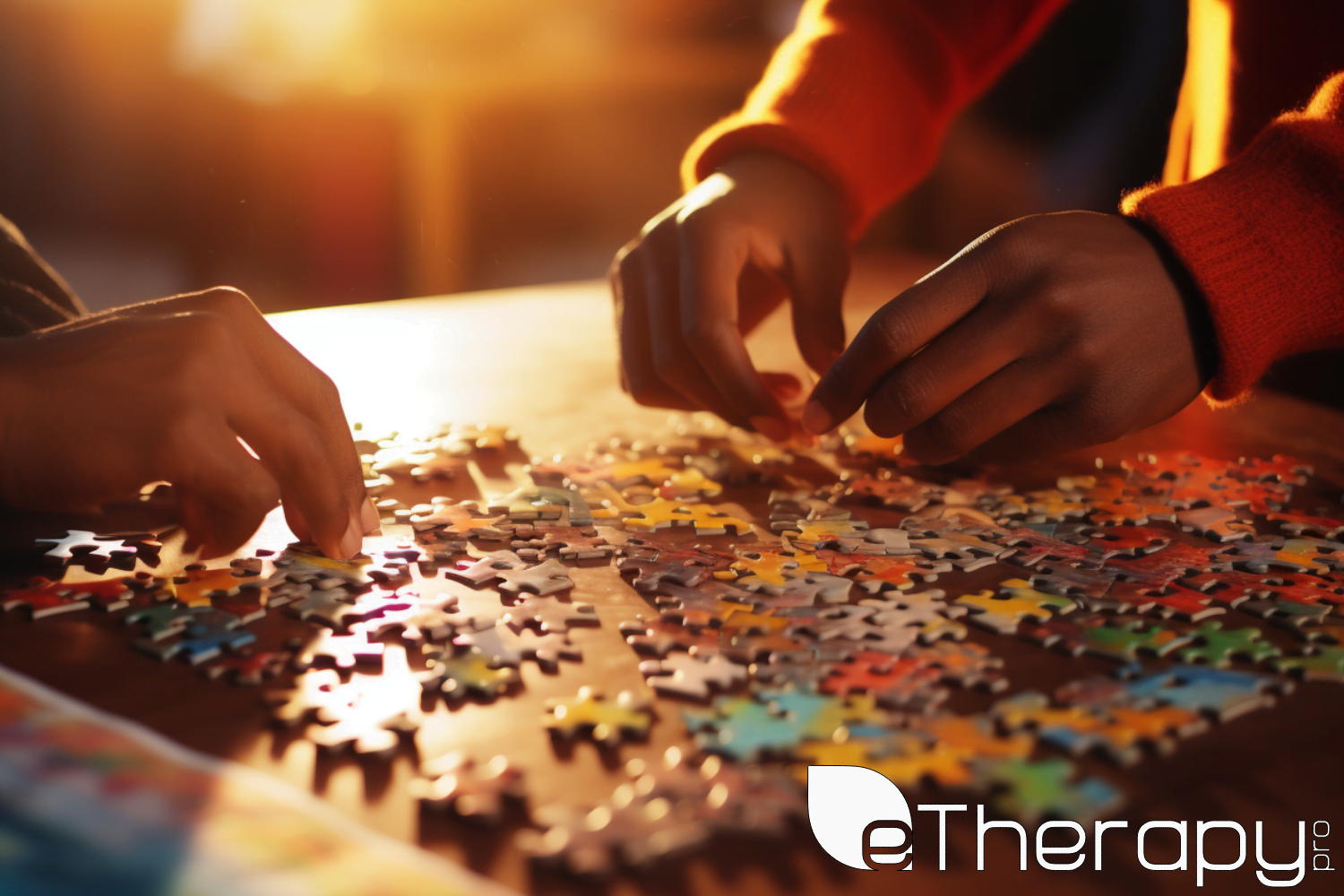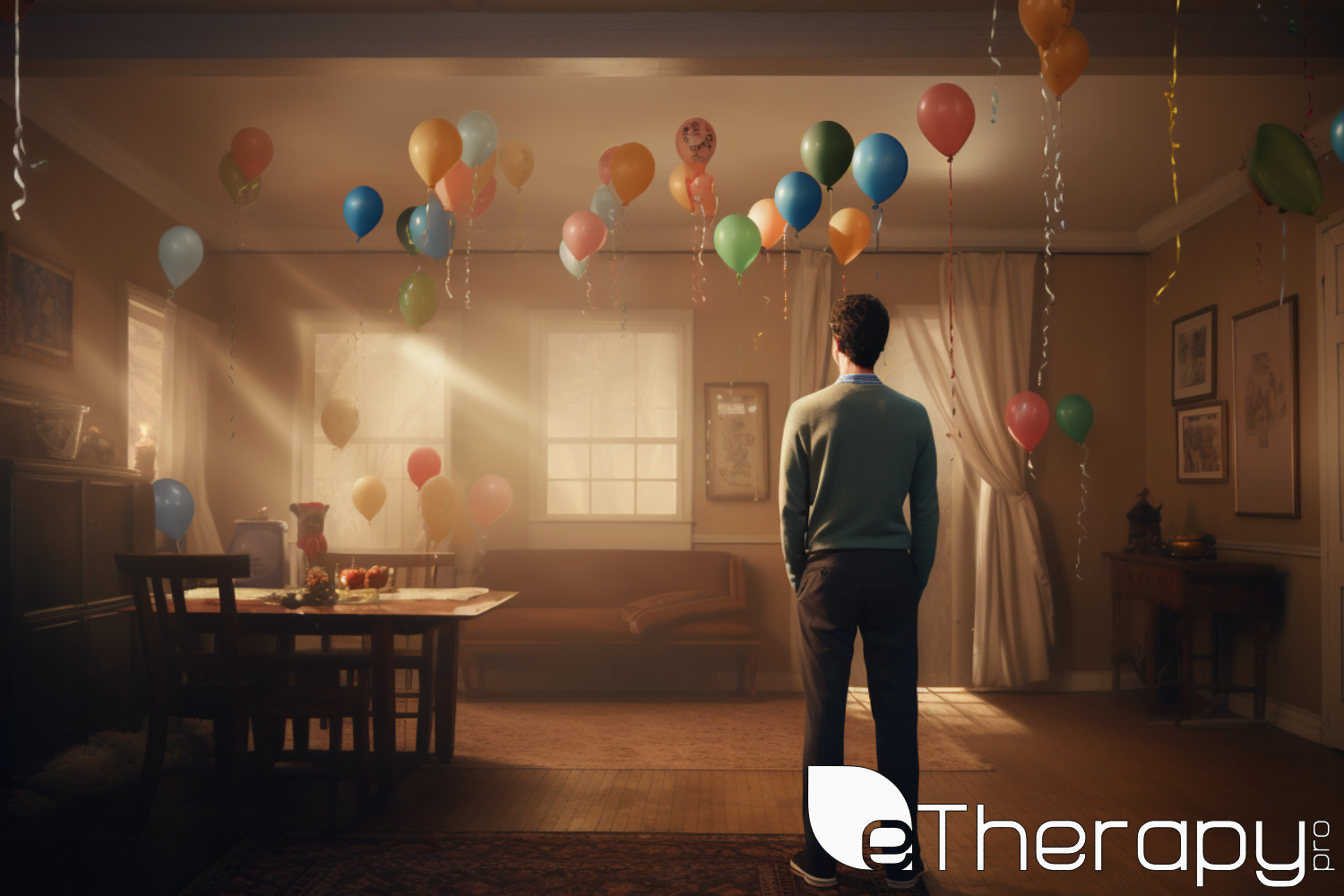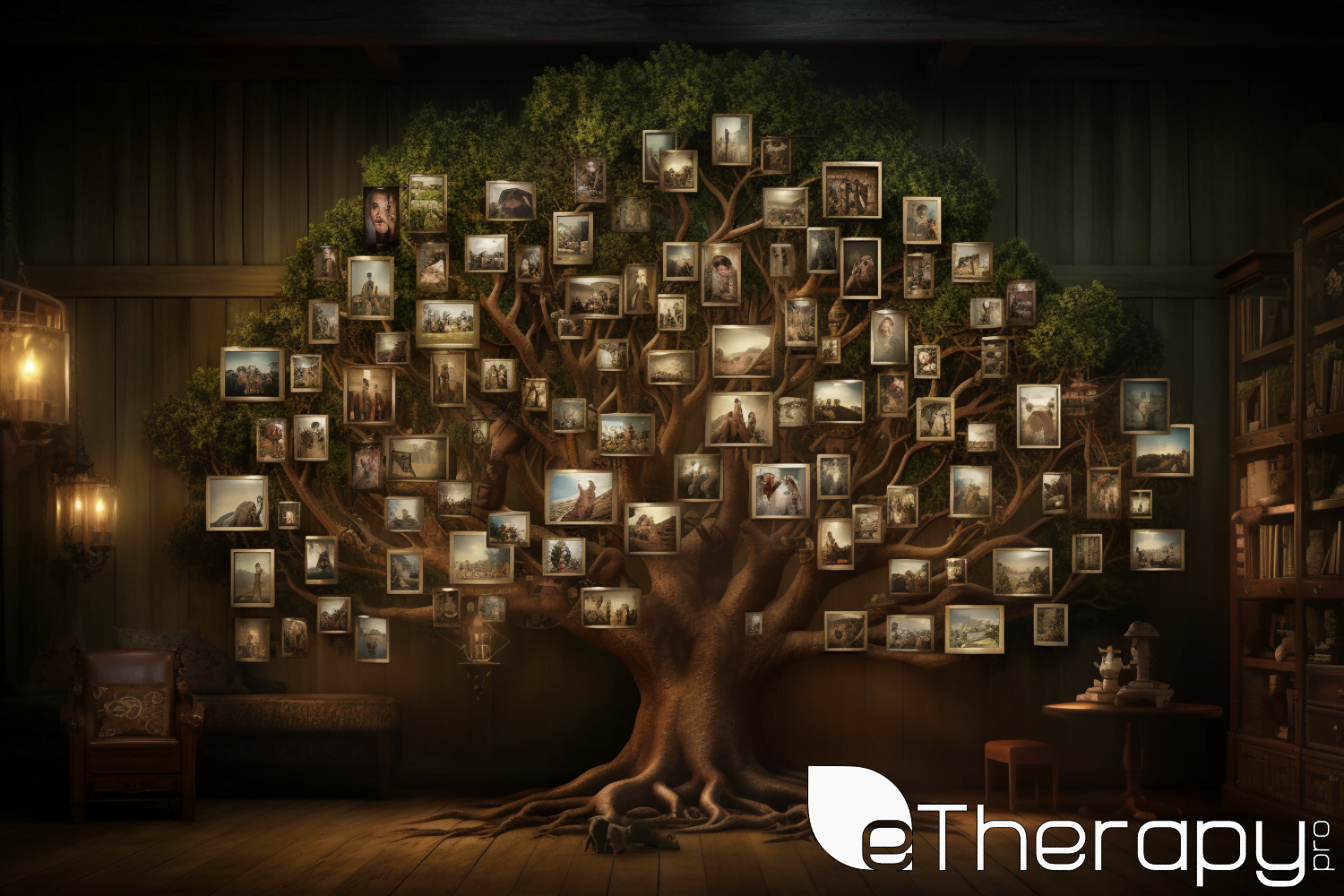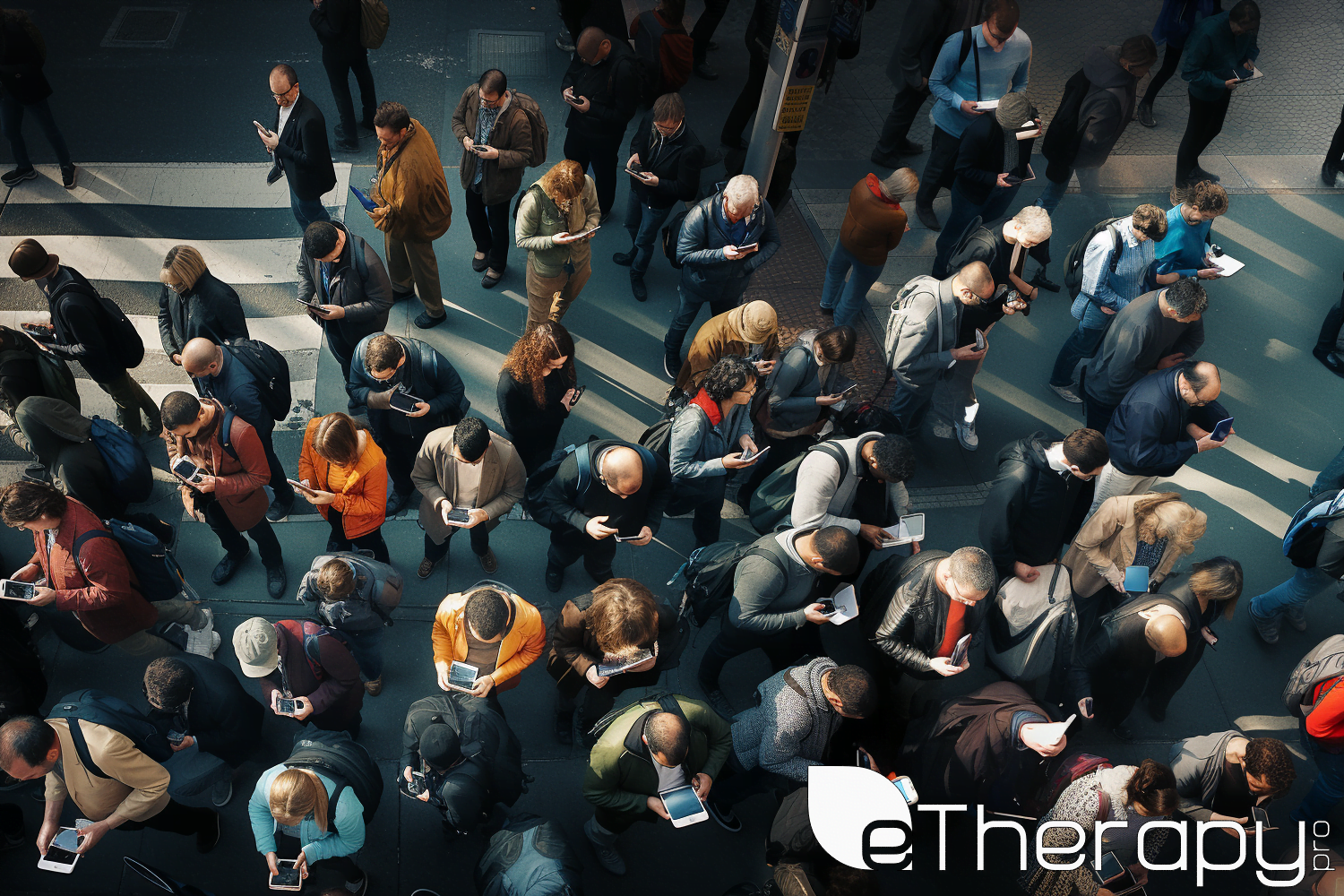 Abandonment issues are a complex web of emotions that almost everyone has felt at some point in their lives. Picture a child in a crowded mall, momentarily losing sight of their parents. Their heart races, panic sets in, and they’re consumed by a fear of being left behind. This brief moment captures the essence of what abandonment feels like. As we grow, such fears are often left in the recesses of our past, yet for many, they persist and amplify. For some, these fears don’t just arise from getting lost in a crowd but from deep-seated experiences that have left scars. It’s not just about physically being left behind. It’s the emotional void, the unsettling feeling of not being enough, of thinking you might always be the second choice.
Abandonment issues are a complex web of emotions that almost everyone has felt at some point in their lives. Picture a child in a crowded mall, momentarily losing sight of their parents. Their heart races, panic sets in, and they’re consumed by a fear of being left behind. This brief moment captures the essence of what abandonment feels like. As we grow, such fears are often left in the recesses of our past, yet for many, they persist and amplify. For some, these fears don’t just arise from getting lost in a crowd but from deep-seated experiences that have left scars. It’s not just about physically being left behind. It’s the emotional void, the unsettling feeling of not being enough, of thinking you might always be the second choice.
When such emotions aren’t just fleeting thoughts but an overwhelming presence, it’s an indicator of abandonment issues. Recognizing and understanding this is vital, not just for those going through it but for everyone around them. As we delve deeper into this topic, we’ll unravel its causes, its profound effects on relationships, and more importantly, steps toward healing. The journey of understanding starts with acknowledging that abandonment issues are real, valid, and, most importantly, manageable.
Unraveling the Roots of Abandonment Issues
Every emotion, every fear we experience, has an origin. To truly tackle the looming shadow of abandonment, we need to dig deep, tracing back to the events that planted these seeds of doubt and insecurity.
Childhood Experiences
Our earliest years often leave the most indelible marks on our psyche. For many, the tendrils of abandonment fears trace back to moments when the world seemed too big and they felt too small and alone.
Parental Absence
More than just physical absence, a lack of emotional connection or understanding from parents can cast long shadows. The child grows up with a void, constantly seeking the warmth and affirmation they missed.
What cannot be communicated to the [m]other cannot be communicated to the self. – John Bowlby
Early Trauma
The untimely loss of a loved one or significant upheavals can jolt a child’s sense of security. Such traumatic events instill a deep-rooted fear that those they love can disappear anytime.
Past Relationships and Their Shadows
The ghosts of past relationships often linger, casting their shadows over new beginnings, making trust a challenge and reigniting fears of abandonment.
Repeated Patterns
Engaging in relationships with individuals who are distant or non-committal can create a vicious cycle. It perpetuates the feeling that one is always on the verge of being left, exacerbating abandonment fears.
By understanding these roots, we pave the way for healing, allowing us to build stronger, more secure relationships in the future.
The Domino Effect: How Abandonment Issues Shape Our Interactions
Abandonment issues are akin to dropping a stone in water. The initial splash might seem contained, but the ripples it causes spread far and wide, affecting various facets of our interactions. From seeking validation to the intricate push-pull dynamics in relationships, the underlying fears create a complex web that dictates behavior and molds perceptions.
We don’t see things as they are, we see them as we are. – Anais Nin
Clamoring for Validation
At times, the fear of being left behind is so overwhelming that individuals find themselves in a ceaseless quest for assurance. Every text unanswered, and every call missed is perceived not as an innocent oversight but as an alarming sign of waning interest. This constant need for validation stems not from vanity but from the deep-rooted fear of any indifference being a precursor to abandonment.
Jealousy and Overthinking
Two shadows that frequently accompany abandonment issues are jealousy and the habit of overthinking. Even a simple, harmless interaction of a loved one with another can spiral into a tornado of doubts and “what ifs.” Such reactions not only strain relationships but also chip away at one’s self-worth and confidence.
Avoidance Paradox
On the flip side, some build high walls, not to keep others out, but to protect themselves. They purposefully avoid forging deep connections, believing that distance will shield them from the pain of potential abandonment. It’s a paradox – they crave intimacy but dread it simultaneously, a self-preservation strategy that often backfires.
Push-Pull Dynamics
This dichotomy gives rise to a tussle, an internal struggle manifesting externally. Individuals yearn for closeness, to be understood and cherished, but the moment they sense it, the fears rear their heads, urging retreat. It’s a dance of come-here-go-away, leaving both parties perplexed.
Recognizing these patterns is the first step in breaking the cycle, ensuring that the fears of the past don’t hold one’s future hostage.
Navigating Through the Storm: Practical Steps to Overcome Abandonment Fears
The journey from the shadows of abandonment fears to the light of self-assuredness may seem daunting. However, with proactive steps and a determined heart, this journey becomes not just feasible but transformative.
Immediate Respite
The gut reactions, the intense pangs of anxiety, are the immediate battles. Breathing exercises can be immensely helpful. Just focusing on one’s breath, inhaling deeply, and exhaling slowly, can bring clarity and calmness in the heat of the moment.
Face the Fear Head-On
Why does the fear of abandonment hold so much power? It’s often the fear of the unknown. A shift in perspective can change everything. When the mind whispers, “What if they leave?”, challenge it with, “So what if they do?” You are resilient. You have weathered storms before, and you’ll do so again.
Cherish Solitude
Being alone doesn’t equate to loneliness. In solitude, find moments of introspection. Whether it’s rekindling a forgotten hobby, soaking in the sounds of nature on a tranquil walk, or savoring a cup of coffee in silence, it’s about redefining what solitude means to you.
Long-Term Healing
The journey to healing isn’t a sprint; it’s a marathon. It requires patience, persistence, and a commitment to oneself.
Individual Therapy: While personal strategies are invaluable, sometimes, we need an external perspective. Professionals on platforms like eTherapyPro offer insights, coping strategies, and a listening ear to navigate these choppy waters.
Building a Personal Toolkit: Over time, it’s beneficial to have a set of tools that you can rely on, things that anchor you when the winds of doubt start blowing.
Affirmations: Words hold power. Daily affirmations, simple statements of positivity and self-worth, can be instrumental in rebuilding a fractured self-esteem.
Mindfulness Practices: It’s easy to get lost in the ‘what ifs’ of the future. Grounding exercises, like focusing on one’s surroundings or tactile sensations, can pull you back to the present, away from the spiraling fears.
Conclusion For abandonment
Abandonment issues, stemming from the deeply-seated experiences of our past, have the potential to cast long, enveloping shadows over our present. They shape our interactions, taint our perceptions, and often hold us hostage to a past we neither chose nor control. Yet, in understanding these roots and recognizing their grip, we ignite the first spark of empowerment.
Knowing is the beginning of healing. When we pinpoint the source of our fears, we begin to dismantle their influence. Like a traveler who has wandered off course, the realization of our deviation is the first step back to our desired path.
The road to overcoming abandonment issues is paved with self-awareness, introspection, and proactive actions. Each step we take is a move towards reclaiming control, rewriting our narratives, and reshaping our interactions. By acknowledging these fears and confronting them, we not only regain lost ground but also pave the way for healthier, more fulfilling relationships and a more grounded self.
In the vast tapestry of our lives, abandonment issues are but one thread. With resilience, support, and determination, we can weave this thread into our story without letting it overshadow our entire narrative. Life, with all its challenges, is mutable. Once we discern the patterns of our behavior, we possess the power to alter them, to pull the brakes on detrimental cycles, and to steer our lives towards brighter horizons.
After all, our past might explain us, but it doesn’t define us. The pen is in our hands, and the story is ours to write.
 Relationships. They’re a beautiful puzzle, aren’t they? Sometimes they fit perfectly, and at other times, we find ourselves jamming pieces where they don’t belong. Amidst the wide spectrum of relationships, there lies an area where love and care blend, sometimes muddling into what experts term ‘codependency in relationships’. But what does that mean? And is every
Relationships. They’re a beautiful puzzle, aren’t they? Sometimes they fit perfectly, and at other times, we find ourselves jamming pieces where they don’t belong. Amidst the wide spectrum of relationships, there lies an area where love and care blend, sometimes muddling into what experts term ‘codependency in relationships’. But what does that mean? And is every 

 Have you ever wondered why, in your early twenties, the search for identity and intimacy seems so overpowering? Or why, as you venture into your forties and fifties, reflections on achievements (or perceived lack thereof) consume your thoughts? These questions, and many more like them, are not unique to any individual but are shared experiences that unite us in the human journey. In this article, we dive into these universal quandaries and offer explanations rooted in developmental psychology. Understanding these stages not only brings clarity but can also offer solace, reminding us that this life’s challenges are not only normal but also a
Have you ever wondered why, in your early twenties, the search for identity and intimacy seems so overpowering? Or why, as you venture into your forties and fifties, reflections on achievements (or perceived lack thereof) consume your thoughts? These questions, and many more like them, are not unique to any individual but are shared experiences that unite us in the human journey. In this article, we dive into these universal quandaries and offer explanations rooted in developmental psychology. Understanding these stages not only brings clarity but can also offer solace, reminding us that this life’s challenges are not only normal but also a  Imagine this: You arrive home after a day’s work, and as an experiment, you decide to switch off your phone for just three hours during dinner and relaxation time. An odd sense of unease starts to creep in. What if your boss needs an immediate response? What if a close friend is
Imagine this: You arrive home after a day’s work, and as an experiment, you decide to switch off your phone for just three hours during dinner and relaxation time. An odd sense of unease starts to creep in. What if your boss needs an immediate response? What if a close friend is